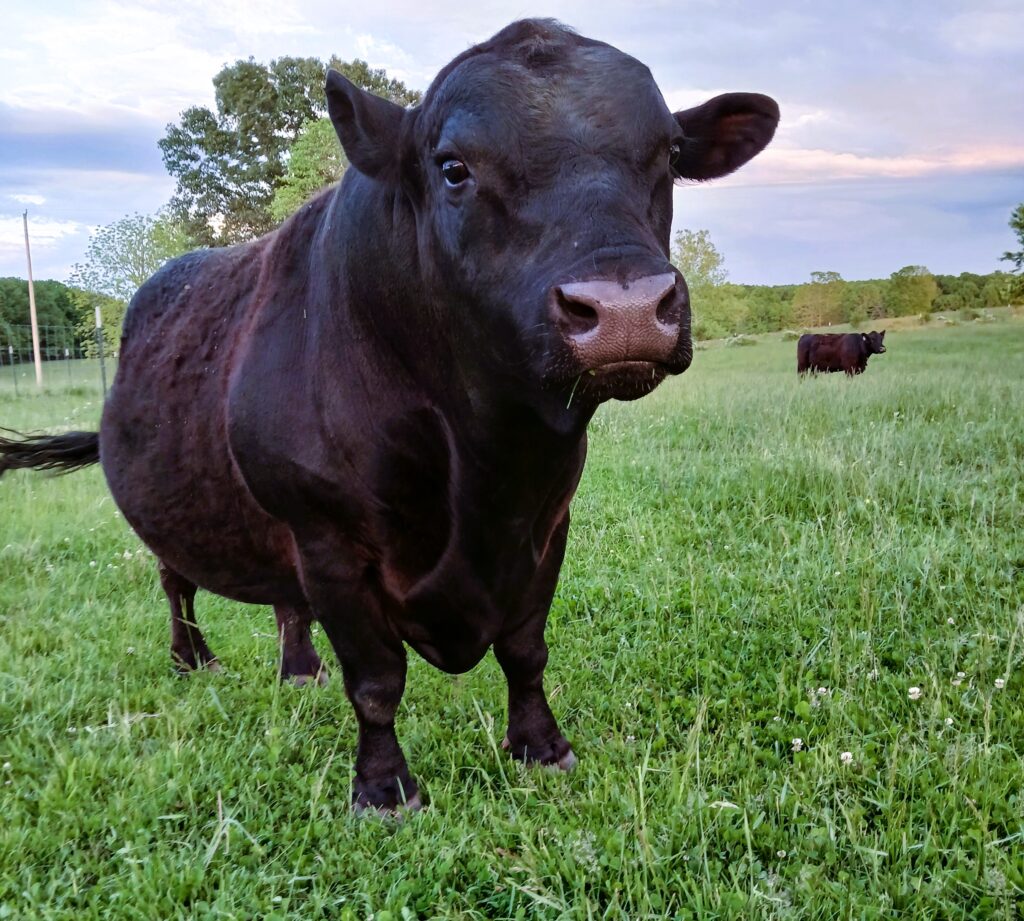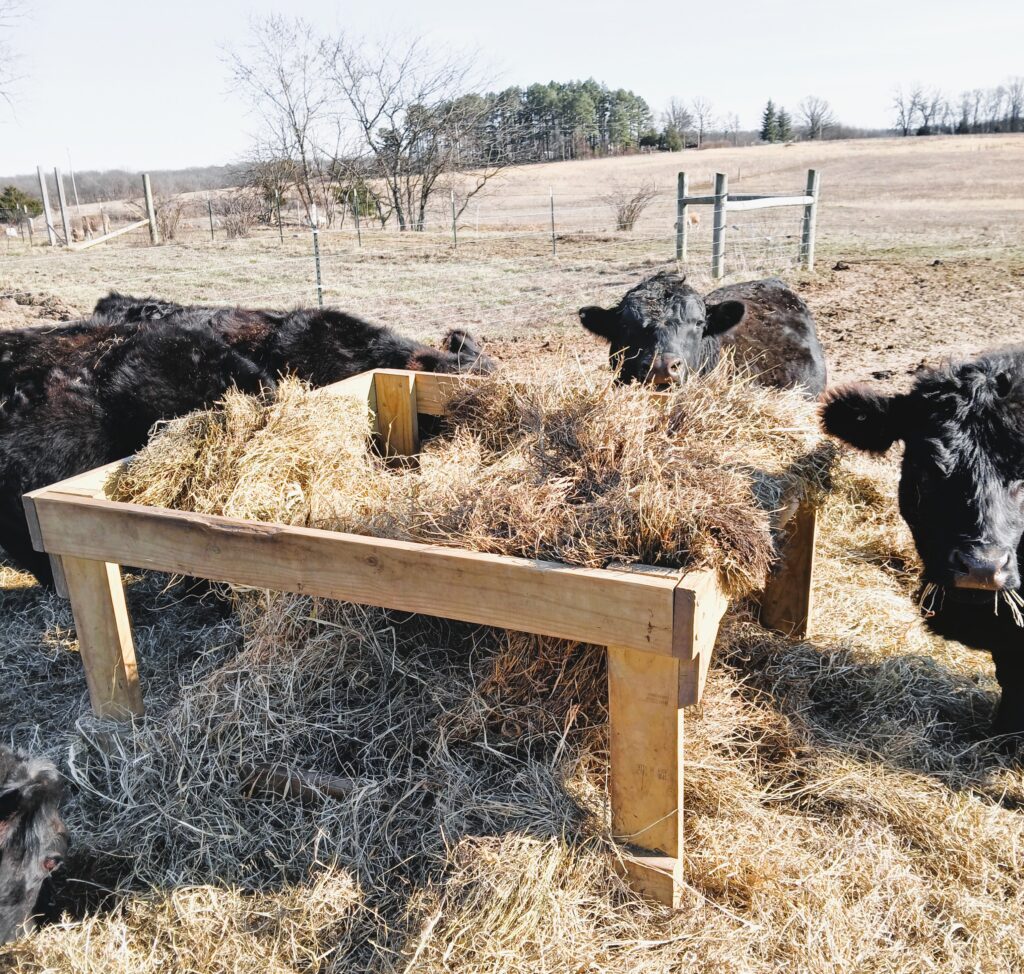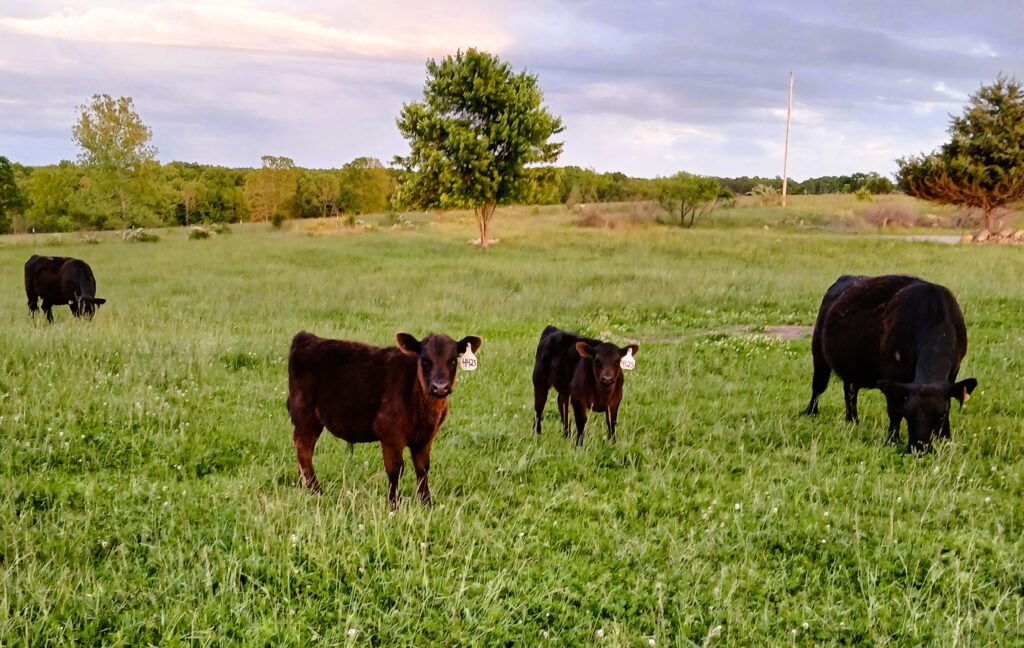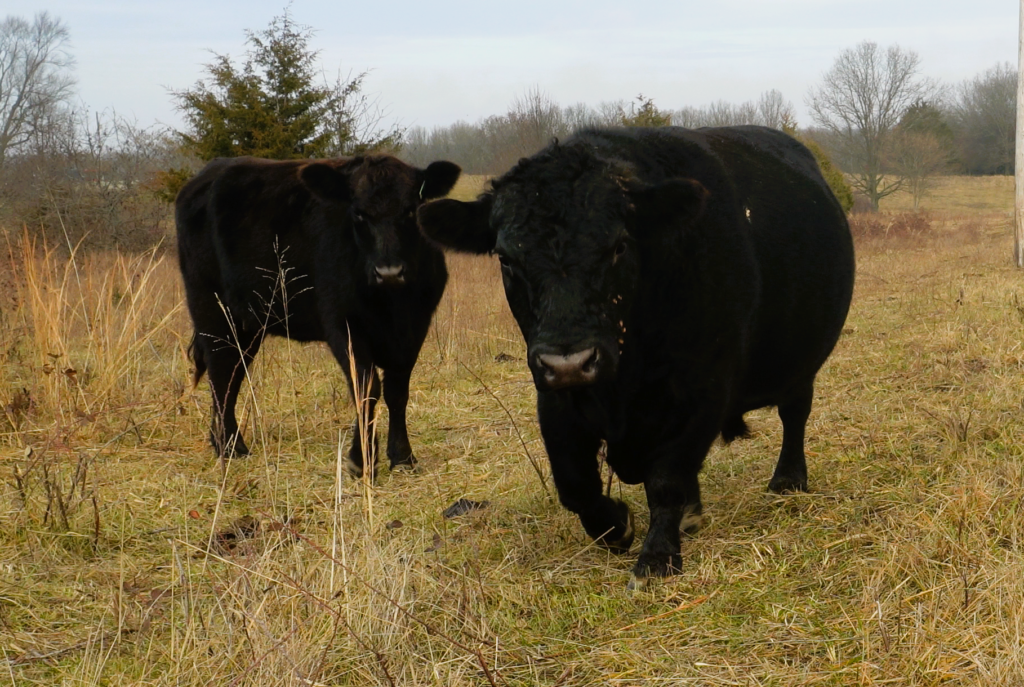We recently made a big change here at Plain View Farm by selling our American Aberdeen bull, Samson. This was not a decision that was made without a great deal of thought. In fact, it’s one that we’ve been rolling around for at least a year. There wasn’t anything wrong with Samson, in fact he was a great bull. Ultimately, however, we decided that it just didn’t make any sense to keep him around any longer.
Understanding the Impact of Livestock Decisions on Farm Economics and Sustainability

Addition by Subtraction: The Cost of Keeping a Breeding Bull
Basic economic theory tells us that for everything, there is a something called a point of diminishing return. Naturally, the smaller your operation, the harder it’s going to be to justify keeping a bull because as the number of cows serviced decreases, the more expensive he becomes.
The truth of the matter is, caring for a good bull isn’t cheap and having only five brood cows on our small-scale farm means that our bull was responsible for a large portion of the hay budget. If he consumed an average of 3 percent of his body weight (1100 pounds) each day for 181 days, he would have consumed seven 900-pound round bales.
Considering that I fed a total of 30 bales of hay from November 1st through May 1st, the fact that one animal was responsible for so much is, frankly, astonishing. It’s even more attention grabbing when you consider that I was also feeding hay to the previous year’s calf crop (4 calves) along with Samson and the cows.

If our bull had that big of an impact on the amount of hay we feed, he would have an equally large impact on our pasture requirements. The feed requirements are going to be the same regardless of what the animals are eating. It quickly became clear that we could increase the efficiency of our farm’s cattle operation by at least 20 percent. That’s a major financial boost for our farm.
Evaluating Breeding Program Options
So, by getting rid of our bull, we solved one problem but created an empty space on our farm that had to be filled. Without a bull, cows are basically just really big pets. To solve our problem, we’re doing what many other small-scale farms like ours are doing, turning to artificial insemination (AI). It may seem complicated at first, but it offers big benefits. Aside from the cost savings that I mentioned above, AI opens up a wider pool of genetics which improves herd diversity.
In fact, before we decided to go the AI route, we were considering buying a Mini Hereford or South Poll bull to crossbreed with our American Aberdeen cattle to take advantage of hybrid vigor. By using AI, we are able to take our pick of many bulls. This means that we can be much more selective, even choosing semen from a bull that we otherwise wouldn’t be able to afford because as you likely know, the better the pedigree, the more expensive the bull will be.
We’ve found that a single straw of semen from what we would consider to be a high pedigree bull will cost from $25 to $50, not including the cost of insemination. Even at $100 per straw, we feel that we would still be ahead financially to make the switch to AI because of the improvement to our herds overall genetics.
The Effect of AI On Stocking Rate and Future Breeding Options
By selling our bull, we’ve opened up room for another cow. That additional cow will eat less than our bull, but provide us with one more calf to sell each year. In fact, we’ve already selected a heifer that we are considering keeping on the farm to fill that role.

Speaking of keeping heifers, by not having a bull the replacement of cows in the future will be much easier because we won’t have to worry about the possibility of inbreeding. In the past we’ve sold heifers that we otherwise would have liked to keep because we weren’t ready to replace our bull. Now, any heifer that we view as good breeding stock can be kept without a second thought. Also, if we get the opportunity to expand our farm through a pasture lease or real estate purchase, we can expand our herd quickly with less risk.
Our Plan for Implementing Artificial Insemination (AI) and the Future of our Herd
Getting started with AI means choosing high-quality semen, timing your inseminations carefully, and keeping your herd healthy. We’ve made the decision to partner with a local AI technician that we know personally. If you’re looking to find an AI service provider, be sure to do your homework. Ask around and be sure to check references. Just a little bit of planning can save you considerable time and effort. Planning ahead means higher pregnancy rates and stronger calves.
Many farmers who use AI will lease a bull, or bulls, to provide cleanup services to breed any cows that didn’t successfully breed using AI. For us, that’s not something that we would consider to be feasible. So, we’re planning to allow for multiple inseminations, if necessary.
Of course, we do expect there to be a transition period as we get used to this process. That means that we’ll have to pay closer attention to the cattle to be sure that we are able to successfully identify heat cycles. While failure isn’t something we want to experience, we fully understand that it’s all part of the learning process. So, if you’re considering AI we want to encourage you to not be discouraged if things don’t go perfectly from the start.
We’re also expecting to make some changes in how we cull cattle in the future. As we move forward, how well a cow performs in this new breeding system will be a major factor in whether or not we select her offspring as breeding stock, or even if keep her as part of the herd. Any replacement heifers will have to come from proven cows. We can’t allow ourselves to be taken in by a pretty animal.
Lessons from the Sale of Samson

I always try to find a lesson in any major change or decision. While selling a bull like Samson was tough, it was necessary. As I mentioned at the beginning of this article, he was a great bull. He was easy to handle and very consistent. Ultimately, however, it’s about balancing emotional attachment with economic sense. Samson’s presence was significant, but his costs outweighed his benefits. Moving on created space and new opportunities for the farm.
Conclusion
Small farms thrive through smart actions. It’s important to keep your goals for your farm in mind at all times so that you’re not pulled off course by a flashy new idea. The decision to sell Samson was not made lightly, but when we finally came to what we considered to be the right choice, we acted quickly. Remember: flexibility and good planning are key, but they’re useless without action. Use proven strategies, plan for the seasons, and keep looking for ways to improve. Your farm’s best days are ahead!